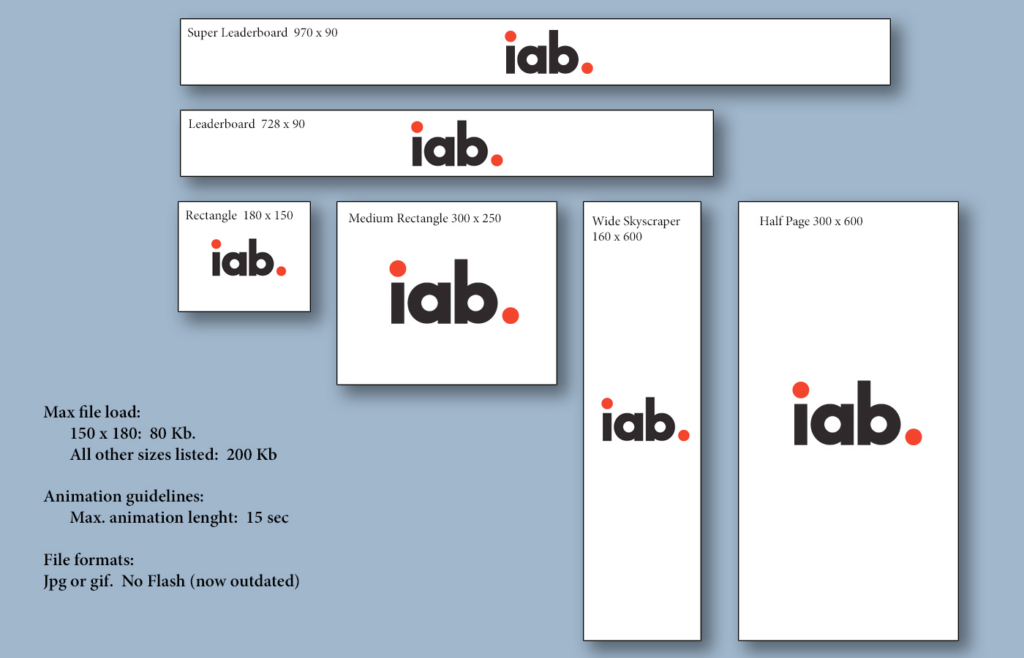In the ever-evolving landscape of digital advertising, the Interactive Advertising Bureau (IAB) plays a crucial role in setting standards and best practices. One key area where the IAB influences the industry is through its guidelines and frameworks for online ads. This article will explore what IAB ads are, their importance, and how they shape the digital advertising environment.
What Are IAB Ads?
IAB ads refer to online advertisements that adhere to the standards and guidelines set by the Interactive Advertising Bureau. The IAB is a trade organization that develops industry standards and conducts research to improve the effectiveness of digital advertising. Their guidelines cover various aspects of online advertising, including ad formats, measurement standards, and best practices for user experience.
Key IAB Ad Formats
The IAB has established several ad formats that are widely used across the web. These formats ensure consistency and effectiveness in online advertising. Some of the most common IAB ad formats include:
- Display Ads: These are graphical ads displayed on websites. They can be static images or animated banners. Display ads come in various sizes, such as leaderboards, skyscrapers, and rectangles.
- Video Ads: These ads appear before, during, or after video content. They can be skippable or non-skippable and are designed to engage users with multimedia content.
- Native Ads: Native ads blend in with the content of the website, thus providing a less intrusive advertising experience. They match the look and feel of the platform where they appear.
- Rich Media Ads: These ads include interactive elements like video, audio, or clickable components. They aim to create a more engaging experience for users.
- Interstitial Ads: These are full-screen ads that appear between content pages or during transitions. They capture users’ full attention but can be seen as disruptive if not used judiciously.
Why IAB Ads Matter
IAB ads are important for several reasons:
- Standardization: The IAB’s guidelines help standardize ad formats and practices across the industry. This ensures that ads are displayed consistently, regardless of the website or platform.
- User Experience: By adhering to IAB standards, advertisers can create ads that are less intrusive and more engaging. This improves the overall user experience and reduces ad fatigue.
- Measurement and Analytics: The IAB provides standards for measuring ad performance. This allows advertisers to accurately assess the effectiveness of their campaigns and make data-driven decisions.
- Innovation: The IAB’s guidelines promote innovation in ad formats and technologies. By setting benchmarks, the IAB encourages the development of new and creative ways to engage users.
Implementing IAB Ads
To implement IAB ads effectively, follow these steps:
- Understand the Guidelines: Familiarize yourself with the IAB’s ad format guidelines and standards. This will help you create ads that meet industry expectations and perform well.
- Choose the Right Format: Select the ad format that best suits your campaign goals and target audience. For instance, use video ads for brand storytelling or native ads for a seamless user experience.
- Design for Engagement: Create visually appealing and interactive ads that capture users’ attention. Ensure that your ads are optimized for different devices and screen sizes.
- Measure Performance: Use the IAB’s measurement standards to track the performance of your ads. Analyze metrics such as click-through rates, impressions, and conversions to gauge effectiveness.
- Optimize and Iterate: Based on performance data, make adjustments to your ad campaigns. Test different formats, messages, as well as targeting options to improve results.
Common Challenges with IAB Ads
While IAB ads offer many benefits, there are also challenges to consider:
- Ad Blocking: Some users employ ad blockers, which can reduce the reach of IAB ads. In order to mitigate this, focus on creating high-quality, non-intrusive ads that provide value to users.
- Ad Fraud: Ad fraud, including click fraud and impression fraud, can impact the effectiveness of IAB ads. Implement measures to detect and prevent fraud, such as using trusted ad networks and monitoring campaign performance.
- Privacy Concerns: With increasing scrutiny on data privacy, ensure that your ads comply with privacy regulations and also respect users’ data preferences. This includes providing clear information about data collection and usage.
- Keeping Up with Changes: The digital advertising landscape is constantly evolving, indeed. Stay updated with the latest IAB guidelines and industry trends in order to keep your ad campaigns relevant and effective.
Conclusion

IAB ads indeed play a vital role in the digital advertising ecosystem by providing standardized formats and best practices. Understanding and implementing these ads can enhance your advertising efforts, improve user experience, as well as drive better results. By following IAB guidelines, you can create effective and engaging ads that resonate with your audience and contribute to the success of your digital campaigns.
Frequently Asked Questions
1. What does IAB stand for in advertising?
IAB stands for Interactive Advertising Bureau, an organization that sets standards and guidelines for digital advertising.
2. What are the main ad formats defined by the IAB?
The main IAB ad formats include parameters such as display ads, video ads, native ads, rich media ads, and interstitial ads.
3. Why should advertisers follow IAB guidelines?
Following IAB guidelines ensures ad consistency, improves user experience, and provides accurate measurement standards for evaluating ad performance.
4. How can I measure the effectiveness of IAB ads?
Use the IAB’s measurement standards to track metrics such as impressions, click-through rates, and conversions to assess ad effectiveness.


